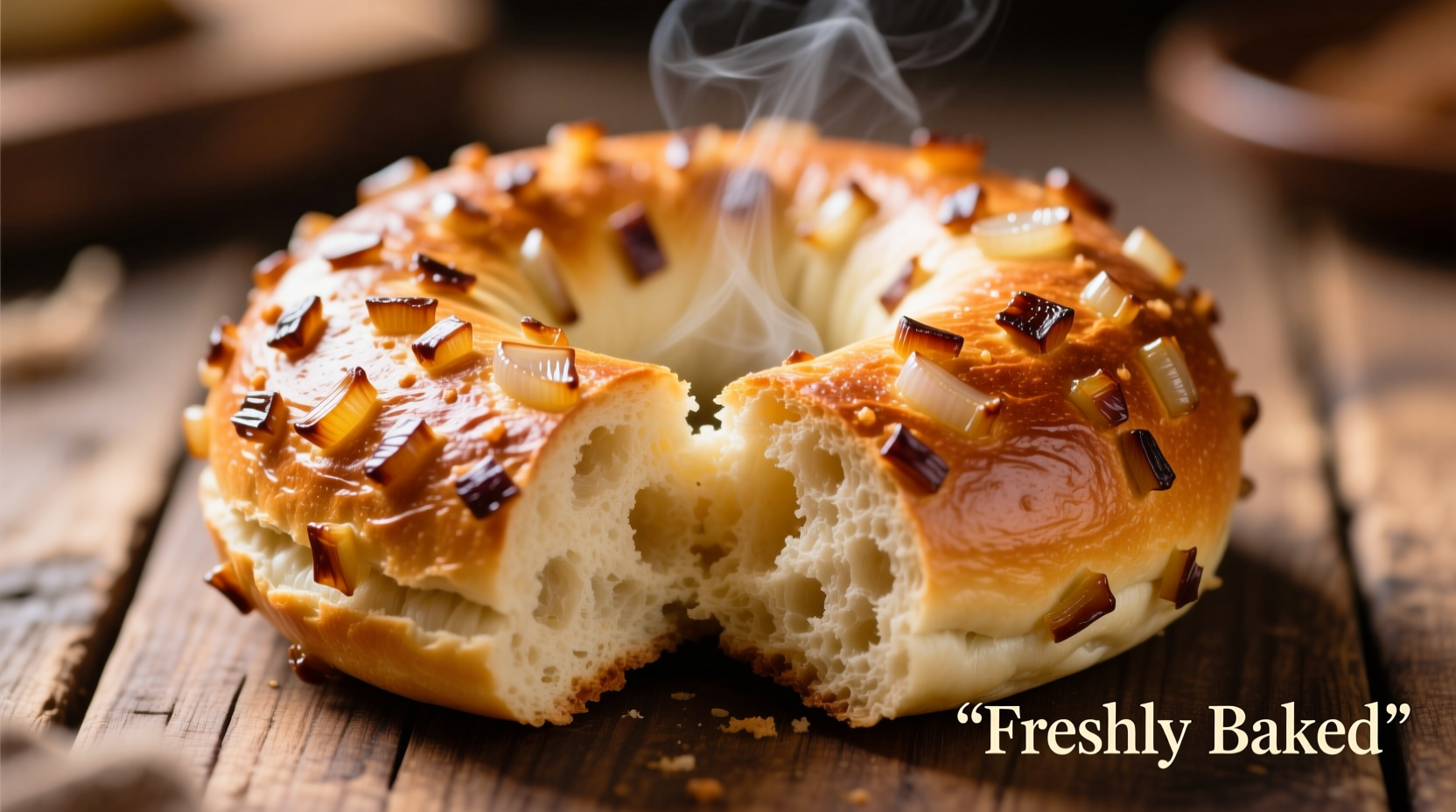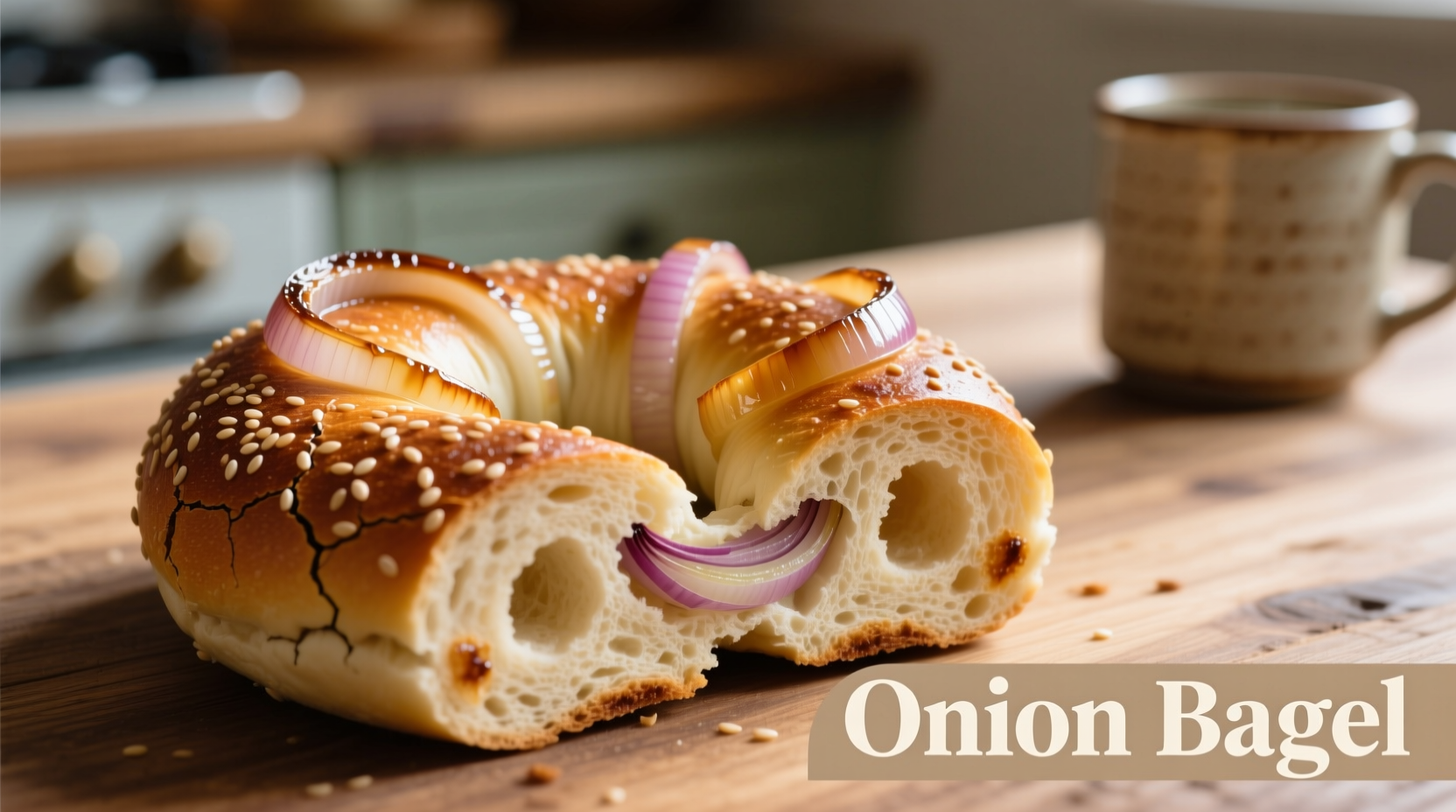The Essential Onion Bagel Profile
Unlike plain bagels, onion bagels incorporate dried onion flakes or finely minced fresh onions into the dough during preparation. According to the USDA FoodData Central, a standard 3.5 oz (100g) onion bagel contains approximately 250 calories, 1.5g of fat, and 50g of carbohydrates, with slightly higher sodium content than plain varieties due to added seasonings.
| Bagel Type | Onion Content | Flavor Profile | Best Serving Method |
|---|---|---|---|
| Onion | 1.5-2% of dough weight | Subtle savory, slightly sweet | Lightly toasted with scallion cream cheese |
| Everything | Part of seasoning blend | Complex, multi-spice | Plain or with plain cream cheese |
| Plain | None | Neutral, slightly sweet | With flavored cream cheeses |
From Immigrant Staple to American Classic
Bagels originated in Jewish communities of Poland in the 17th century, but onion bagels emerged as a distinct variation after Jewish immigrants brought their traditions to New York City in the late 1800s. The Museum of the City of New York documents how Jewish bakers in the Lower East Side began experimenting with flavor variations in the 1920s, with onion becoming an immediate favorite due to its compatibility with traditional schmears.

Perfect Pairings for Maximum Enjoyment
While onion bagels taste delicious plain, certain combinations elevate the experience significantly. Food scientists at Cornell University's Food and Brand Lab found that the sulfur compounds in onions interact favorably with dairy fats, explaining why cream cheese creates such a satisfying pairing.
For the ideal onion bagel experience:
- Toast lightly - Just 30-45 seconds creates the perfect texture contrast
- Choose scallion cream cheese - The mild onion flavor complements rather than competes
- Add smoked salmon - The saltiness balances the sweetness of caramelized onions
- Include capers and red onion - For a classic New York deli experience
Avoid These Common Onion Bagel Mistakes
Many people unintentionally diminish their onion bagel experience through these preventable errors:
Over-toasting - Excessive toasting creates a hard exterior that overwhelms the delicate onion flavor. The ideal toast level shows golden brown spots while maintaining the characteristic chewy interior.
Mismatched cream cheese - Strongly flavored cream cheeses like jalapeño or garlic compete with rather than complement the onion notes. Opt for scallion or chive varieties for harmony.
Serving at incorrect temperature - Allow your bagel to cool for 2-3 minutes after toasting. This lets the flavors develop while preventing burns from hot dough.
Nutritional Considerations
While onion bagels provide complex carbohydrates for sustained energy, they contain slightly more sodium than plain varieties. The 2020-2025 Dietary Guidelines for Americans recommend enjoying them in moderation as part of a balanced diet. For those watching sodium intake, look for brands using minimal added salt in their onion seasoning blends.











 浙公网安备
33010002000092号
浙公网安备
33010002000092号 浙B2-20120091-4
浙B2-20120091-4